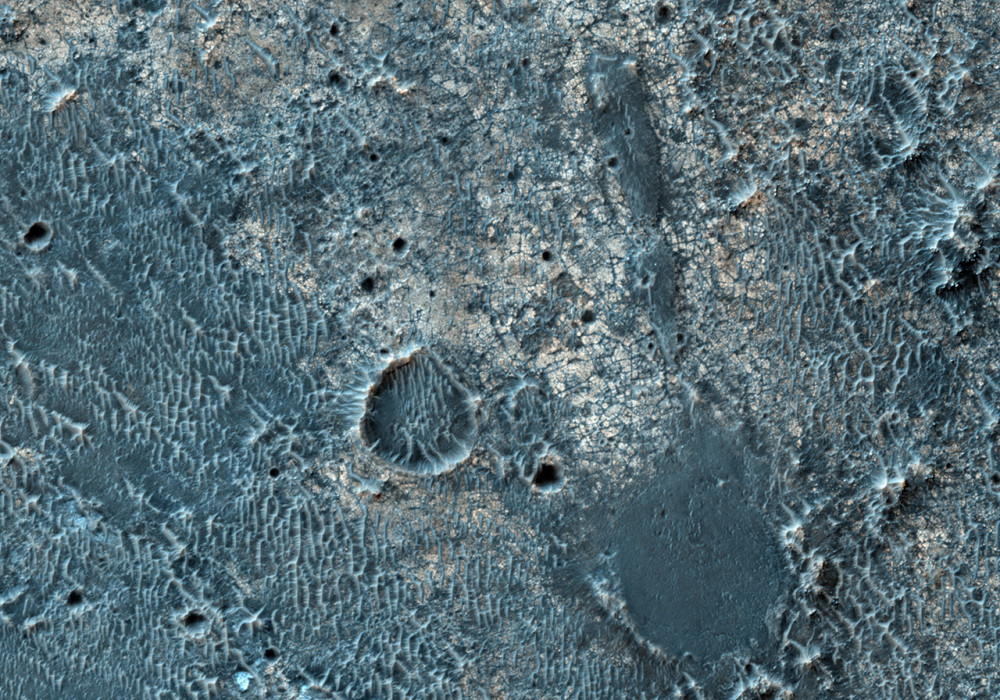There is an intriguing surface unit in parts of the ancient Martian highlands that may consist of chloride salts (like NaCl, or table salt) which precipitated out of shallow lakes as in desert regions of Earth.
It has unusual thermal properties and distinctive morphologies, but lacks spectral absorption bands. All of these characteristics and the geologic settings are consistent with salt deposits. These deposits are often associated with clay minerals that do have distinctive absorption bands.
This particular location has been selected as a candidate landing site for the Mars Science Laboratory or another future rover. Hopefully the HiRISE images won’t reveal too many boulders or steep slopes that would be hazardous.
Written by: Alfred McEwen (17 March 2010)
This is a stereo pair with PSP_007058_1745 .
More info and image formats at http://hirise.lpl.arizona.edu/ESP_016354_1745
Image: NASA/JPL/University of Arizona
